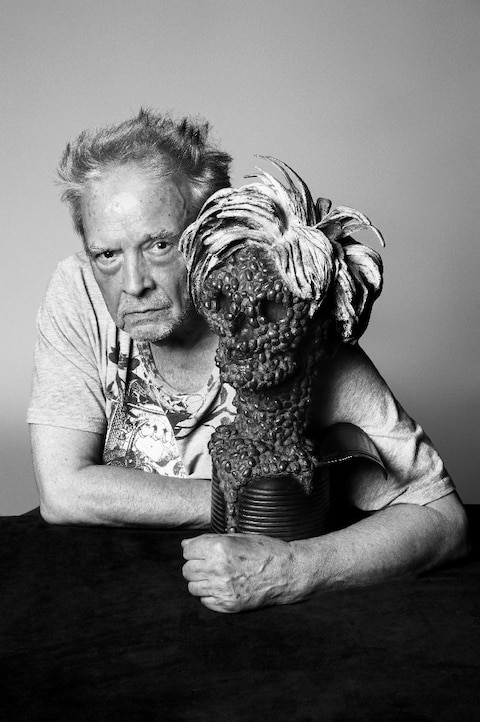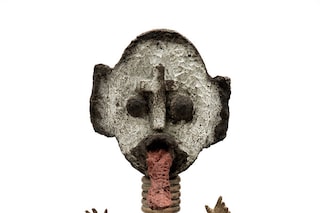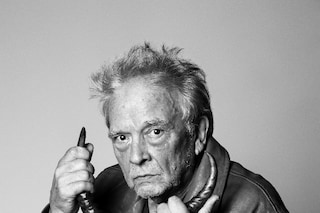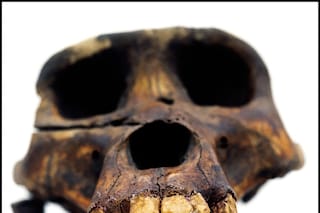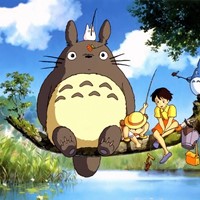On the eve of his much-anticipated sculpture exhibition we talk to the iconic photographer about life, death and animism
The photographer David Bailey has inarguably been responsible for some of the most iconic images ever created. It's no wonder then that an exhibition of his sculptures in bronze at Pangolin is an eagerly-anticipated happening in the art world. The exhibition draws on voodoo-esque imagery and exhibits Bailey's long-term fascination with human skulls and folk-art. The work has a somewhat macabre feel (his taste for darkeness will come as no surprise to those familiar with Bailey's collaboration with Damien Hirst for AnOther Magazine, Stations of The Cross), and at times it almost seems like a tongue-in-cheek meditation on mortality. Here, the legendary image-maker tells Dazed Digital why beauty is always in the eye of the beholder, and how the greatest artistic achievements of humanity often stem from accidents...
Dazed Digital: Some of the work in the show, such as the skulls, seems to be quite dark. Are you quite drawn to the macabre?
David Bailey: To me it’s not really all about darkness and death. I think skulls are beautiful and I consider them as the ultimate form of sculpture. In a way, we all end up as a sculpture – a skull is kind of a portrait, isn’t it? I’ve always photographed skulls and collected them. I’ve got pictures of skulls going back years…
DD: What would you say inspired you to work in the medium of sculpture?
David Bailey: I just like making images, and I don’t really think it matters if it is in the medium of sculpture, photography or painting. It’s just about making the image. Even if nobody else liked them I would do them for myself.
DD: How do you approach the proverbial blank canvas?
David Bailey: Most creative acts are an accident, aren’t they? Suddenly the paint splashes and you realize you can follow the splash to somewhere you never thought of. It’s the same with sculpture: you’re like, ‘Oh I didn’t think of that!’ and then you can go in a direction you could never have pre-conceived. I try not to ever have pre-conceptions, even with my pictures. That’s why I never wanted to do advertising because they always want you to tell them what you are going to do. I never know what I am going to do or what might happen on a shoot because it depends on so many different things.
DD: I imagine the difference is that when you’re working on a sculpture you’re engaged in a relationship with yourself, but when you’re working in the medium of photography you’re engaged in a relationship with another person…
David Bailey: Yes that’s true. You do have to adjust the way you think. Basically, you just gamble all the time, don’t you? When you take portraits you gamble on somebody’s bad mood or somebody’s good mood. It’s the same with making sculptures, except what happens depends on your own mood at the time.
DD: Would you say you were interested in religion: I’m thinking about the collaboration you did with Damien Hirst for AnOther a few years ago…
David Bailey: Oh yes, well I suppose that was just a revised version of The Bible, and Damien is much darker than me! But no, it’s not religion that interests me particularly; it’s more animism and what comes from nature. I’m sort of against religion anyway.
DD: Do you come from more a pagan stance?
David Bailey: (Laughs) I wouldn’t say pagan. When I think of pagans, I think of people dancing around in white fucking bed sheets. I think I’m more into Gothic. One thing I love is Sheelas. Obviously, the name Sheela conjures Australian slang for a woman, but in fact Sheelas were what the gargoyles outside early English churches were called.
DD: (Laughs) Really?
David Bailey: Yeah, they were always pulling their pussies open or their mouths open… They’re quite extraordinary.
DD: That’s fascinating. It’s sad that when they build new churches now they’re always devoid of these kinds of things…
David Bailey: I know, when you go to a church cemetery now it’s like going to look at a load of filing cabinets, because nobody can express himself or herself with the tombstone they really want. Most cemeteries now have to look like an office for the dead because churches are restricted as to what they can put in the cemetery.
DD: Do you think that’s a reflection of modern culture destroying romanticism?
David Bailey: I think it’s just awful political correctness. Just because one person’s taste doesn’t agree with another person’s taste they kind of homogenize it all, and make it all look the same. In a way, that takes away taste.
DD: On the subject of taste, what would you say was the standout greatest artistic achievement of humanity so far?
David Bailey: (laughs) Shit. I really don’t know, but there’s definitely moments in time aren’t there? There’s that moment in time when something just happens and you can’t put your finger on why it happens: it’s like a form of energy. Take the example of the Mexican renaissance. Personally, I couldn’t stand Frida Kahlo and people like that, but it was a very significant moment, and why did it happen at that point in time? In a more superficial way you could say the same of the 60s in London.
DD: Do you think they are evocations of a shift in collective consciousness?
David Bailey: I’ve often thought about that but I can’t answer that question, I really don’t know. You could say that about a lynch mob, you know? It’s strange the way the Germans acted towards the Jews during the war, for example – we don’t ever really understand why. As I get older I become more and more shocked by cruelty, and the imagination that goes into cruelty. People like the Nazis were just unbelievable – to just think up ideas to do those things to another human being: you can’t really understand it, and in a way it’s good that you can’t understand it because if you could it would make life unbearable.
DD: One thing I really wanted to ask you is what your definition of beauty is?
David Bailey: It’s conditioning really, isn’t it? We’ve all been conditioned. If we think of a beautiful woman we are really conditioned by the Greeks, whereas if you come from Africa it’s a different kind of beauty that you recognise, mainly because they were never affected by the renaissance in the way we were. I suppose you just have to try and see beauty how other people would see beauty. The whole point of doing anything like sculpture is that it has to be the viewer that makes the decision about what is beautiful and not the artist. I’m sort of the catalyst but the relationship is between the person and the thing that is being looked at.
DD: Even a hermit in a cave painting would go out into the wilds and try and find someone to show it to.
David Bailey: (laughs) Or put a ticket office on the front of his cave!
Dazed Digital: (laughs) There you go, there’s the beginning of consumer culture right there!
David Bailey: I always thought that one of the great movements of civilization was when people started growing plants for their beauty rather than to eat them. I think that was one of the big steps forward.
Dazed Digital: Aesthetic appreciation over mere functionality…
David Bailey: Yes, at some point in history somebody must have said, “ That looks nice, we grew that, let’s eat it!” and his wife said to him, “ We can’t eat it! It’s beautiful!
